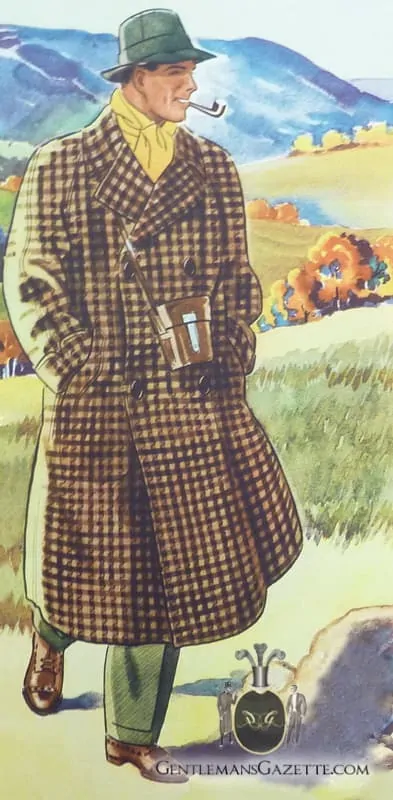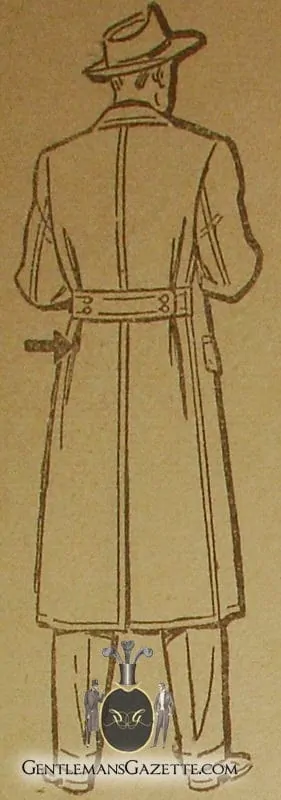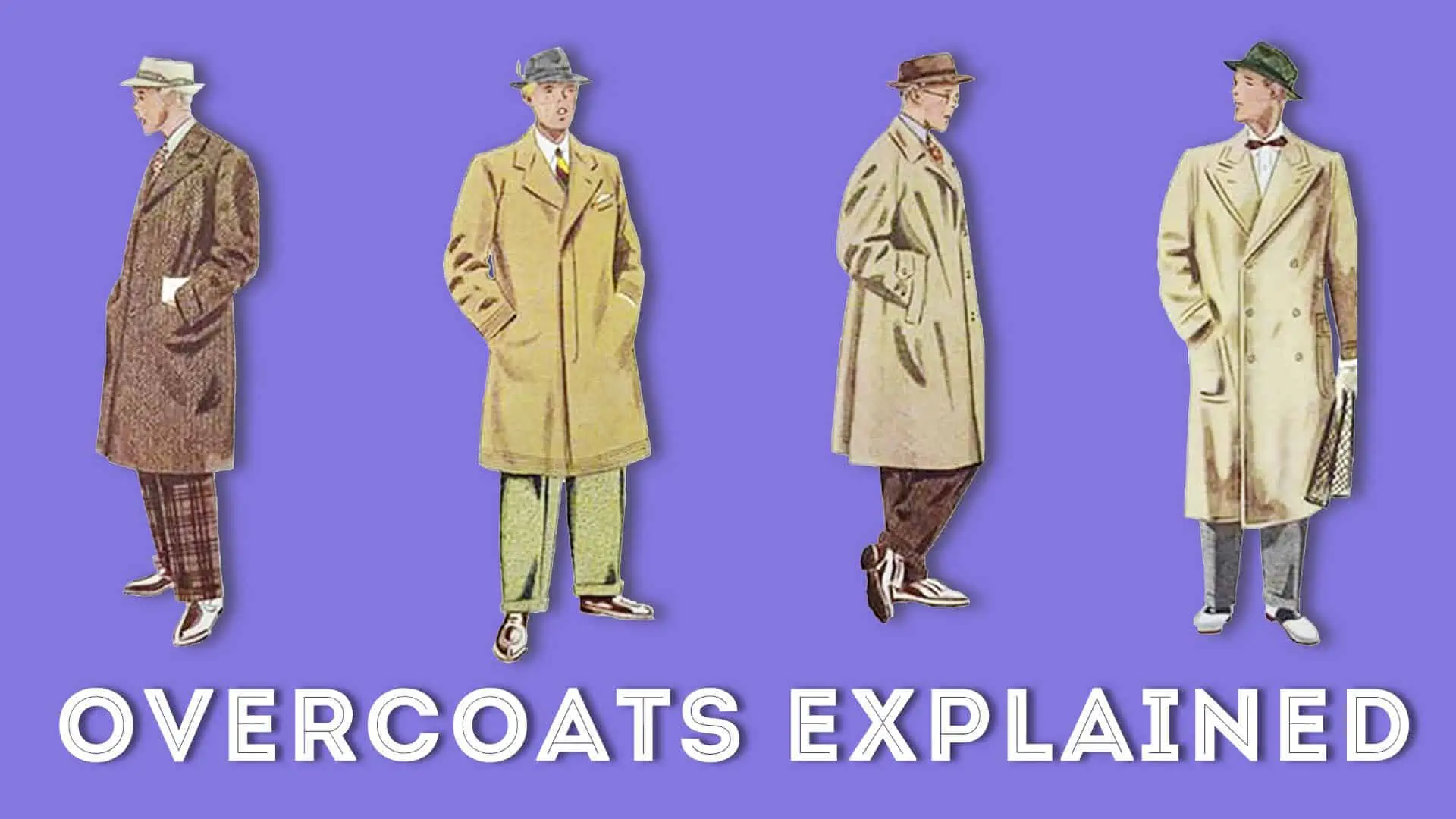After receiving a question about the characteristics of an Ulster overcoat and the Guards coat, I decided to write two separate articles regarding these classic garments, beginning with the Ulster. The name Ulster is derived from the area of the Irish province of Ulster, whose people used to wear a certain tweed overcoat. The Ulster overcoat has always been basically defined by seven elements:

Characteristics of an Ulster Coat
- Long and double-breasted. A classic Ulster is rather long and double breasted, with two vertical, parallel rows of buttons. Often the ulster comes with a 6×3 or 8×4 button configuration with the buttons placed quite low.
- Notched lapels. Usually a double-breasted garment has peaked lapels. The Ulster, however, has lapels that are notched in a certain way, so they can easily be folded over when the coat is buttoned up all the way. This is also known as the Ulster collar.
- Patch pockets. In order to express the informal country character of the overcoat, the Ulster always has patch pockets.
- Contrast stitching. For the same reason, an Ulster shows contrast stitching along the edges and cuffs.
- Cuffs. You will always see cuffs on a true Ulster.
- Belt. The Ulster is usually cut rather generously and may thus look a little bulky. In order to give the silhouette a little more shape, the Ulster usually has a belted back (“half belt”) with adjustable buttons so the wearer may change the degree of the waist suppression. For comfort and ease of movement, an Ulster also has long pleats in the back. Sometimes, you can also see a belt that goes completely around and buckles in the front—just like a trenchcoat.
- Tweed. A genuine Ulster is made out of tweed, more specifically Donegal Tweed. This heavy tweed—starting at about 22 oz. per yard (about 600 g per meter)—was originally invented in Donegal County in the province of Ulster. It is characterized by its rustic hand-woven look, as well as its multicolored dots.
- (Optional) Hood/Cape. In the 1880’s, Ulster overcoats often had a hood, cape or pelerine. Many people associate the cape as worn by Sherlock Holmes with the Ulster coat. While these overcoats are still Ulster overcoats, a hood or a cape is not essential for an Ulster.

Utility of an Ulster Coat
Starting in the 1890’s, capes slowly disappeared, and today the Ulster is rarely seen with it. With its heavy cloth, roomy cut, and huge pockets, the Ulster makes for an ideal travel companion during the colder half of the year. The cloth is very sturdy so it won’t wear out easily—even if you carry a bag with a shoulder strap, and the mottled Donegal tweed structure hides dirt and stains.
Variations on the Ulster Coat
Today, there exist a number of different Ulster variations. For example, my Donegal overcoat shows certain elements of an Ulster-like patch pockets, cuffs, and contrast stitching. However, it has peaked lapels and the top row of buttons is for decoration only. Therefore, it is definitely not an Ulster. Some other Ulster variations do have raglan sleeves or lack cuffs. The characteristics, as outlined above, describe a true Ulster, but if you come across an overcoat you like that has certain features of an Ulster, but is missing others—don’t worry. Just wear it and enjoy its warmth! Chances are it will be with you for a long time. In case you should be interested in other top coats, please do take a look at our list of overcoats.

Reader Comments
Comments are closed.